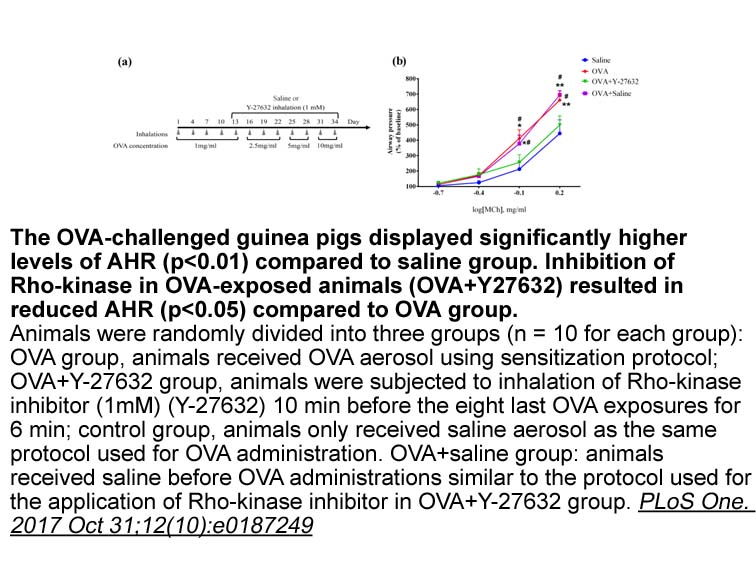Archives
Androgen receptor translocates from the cytoplasm to
Androgen receptor translocates from the cytoplasm to the nucleus after binding to its ligands (Quigley et al., 1995). In the current study, although propofol did not significantly affect total androgen receptor protein levels, it significantly decreased nuclear androgen receptor levels. These findings suggest that propofol might affect the transport of androgen receptor proteins into the nucleus. A recent report demonstrated that the transport of androgen receptor proteins into the nucleus is mediated by microtubules (Thadani-Mulero et al., 2012). Androgen receptor is recruited to microtubules either directly or with the cooperation of the motor protein dynein, and is subsequently transported into the nucleus where it becomes transcriptionally active (Mistry and Oh, 2013). Microtubule-stabilizing drugs referred to as taxanes are commonly used to treat prostate cancer. Taxanes reportedly exert anti-cancer effects, at least in part, by disrupting the nuclear trafficking of androgen receptor proteins (Darshan et al., 2011). HIF-1 (Carbonaro et al., 2012) and glucocorticoid receptor (Harrell et al., 2004) are also transported into the nucleus via a microtubule-dependent system. In the current study, nuclear levels of both HIF-1α and HIF-1β decreased in LNCaP cells. Therefore, our results suggest that propofol might suppress nuclear levels of androgen receptor and HIF-1 by inhibiting microtubule-based transport. Microtubule-dependent transport is considered important not only for cancer progression but also for normal physiological functions such  as neuronal activity or organ development (Schiavo et al., 2013, Vallee et al., 2012). Therefore, further investigation into the precise effects of propofol on microtubules is required.
As the limitation of the current study, the surgery for prostate cancer lasts for several hours, and mostly no longer than a dozen of hours. In our study, propofol attenuated the viability of LNCaP BAMB-4 for 24h and not 4h. Isoflurane suppressed the induction of FKBP5 and TMPRSS in 8h and not 4h. Therefore, in clinical settings, the administration time of general anesthetics
as neuronal activity or organ development (Schiavo et al., 2013, Vallee et al., 2012). Therefore, further investigation into the precise effects of propofol on microtubules is required.
As the limitation of the current study, the surgery for prostate cancer lasts for several hours, and mostly no longer than a dozen of hours. In our study, propofol attenuated the viability of LNCaP BAMB-4 for 24h and not 4h. Isoflurane suppressed the induction of FKBP5 and TMPRSS in 8h and not 4h. Therefore, in clinical settings, the administration time of general anesthetics may not be long enough for the anti-androgen receptor activity we observed in this study to have a practical effect. However, in the cases of critical care, general anesthetics, including propofol, could be administrated for longer hours and could have a significant impact on a patient's prognosis.
In conclusion, our study demonstrated that propofol suppresses androgen-androgen receptor complex-mediated transcriptional activity and attenuates nuclear androgen receptor levels in LNCaP cells. In addition, propofol suppressed the nuclear accumulation of HIF-1α and HIF-1β under hypoxic conditions. As androgen receptor and HIF transactivation is associated with prostate cancer growth and metastasis, propofol might confer substantial clinical benefits to patients with prostate cancer. However, a prospective clinical study is required to confirm this hypothesis.
may not be long enough for the anti-androgen receptor activity we observed in this study to have a practical effect. However, in the cases of critical care, general anesthetics, including propofol, could be administrated for longer hours and could have a significant impact on a patient's prognosis.
In conclusion, our study demonstrated that propofol suppresses androgen-androgen receptor complex-mediated transcriptional activity and attenuates nuclear androgen receptor levels in LNCaP cells. In addition, propofol suppressed the nuclear accumulation of HIF-1α and HIF-1β under hypoxic conditions. As androgen receptor and HIF transactivation is associated with prostate cancer growth and metastasis, propofol might confer substantial clinical benefits to patients with prostate cancer. However, a prospective clinical study is required to confirm this hypothesis.
Authors' contributions
Declaration of interest
Acknowledgements
This research received the Grant-in Aid for Scientific Research (16K20093) from the Japan Society for the Promotion of Science (Tokyo, Japan).
Introduction
The androgen receptor (AR) is a ligand-activated nuclear hormone receptor that plays a critical role in the development of the male phenotype (Gelmann, 2002; Li and Al-Azzawi, 2009). A dimer of the receptors works as a transcription factor in the nucleus when it is combined with internal androgen hormones, testosterone and its metabolite, 5α-dihydrotestosterone. AR is almost ubiquitously expressed in tissues and mediates various physiological and developmental functions in addition to virilization. Androgens in the brain are involved in circuit formation during development and maintaining proper function in adulthood. Thus, expression of AR is considered to affect not only reproductive but also non-reproductive behavior patterns dealing with aggression and emotion (Li and Al-Azzawi, 2009).